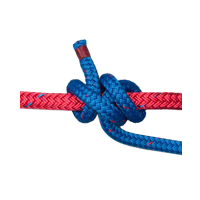Tumble Hitch Tying
Hold an initial bight of the rope against the pole. Place a second bight behind the pole and through the initial bight. Pass the tail around the Standing End. Then tuck a bight through the second one. Tighten to secure the knot and take the load. Pull the tail to release.
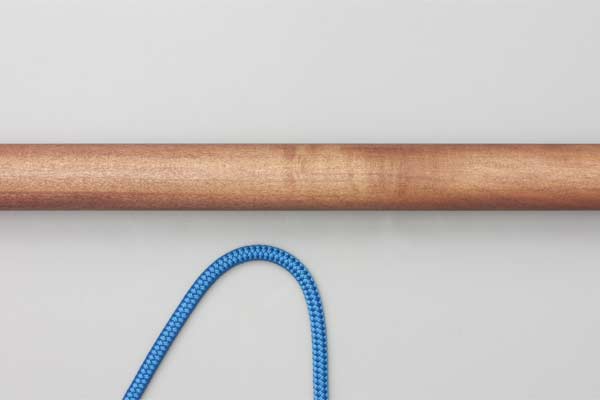
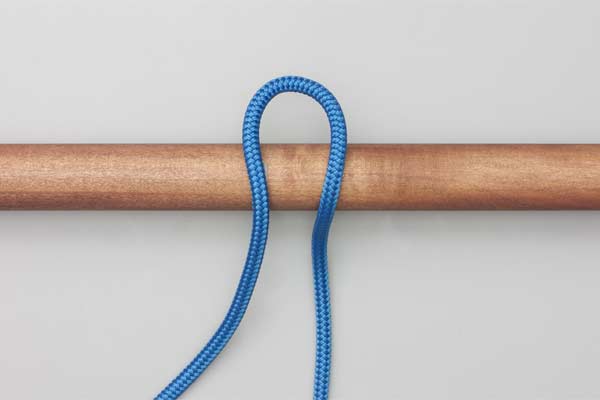
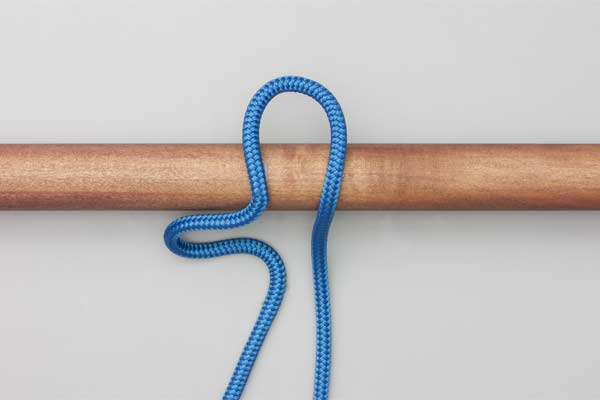
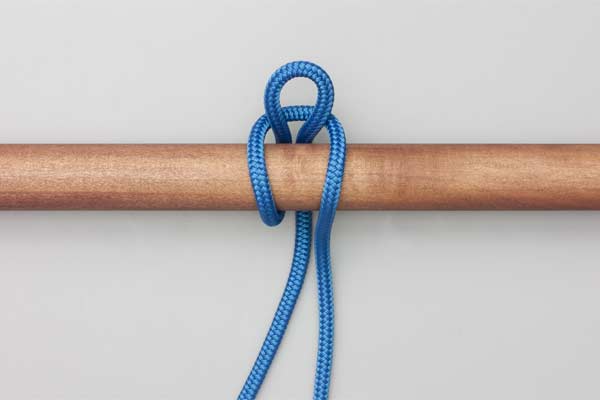
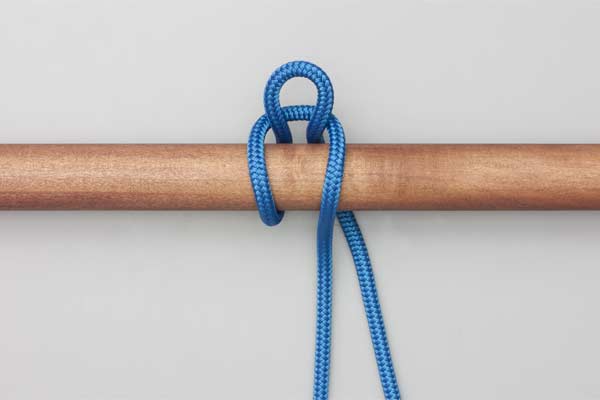
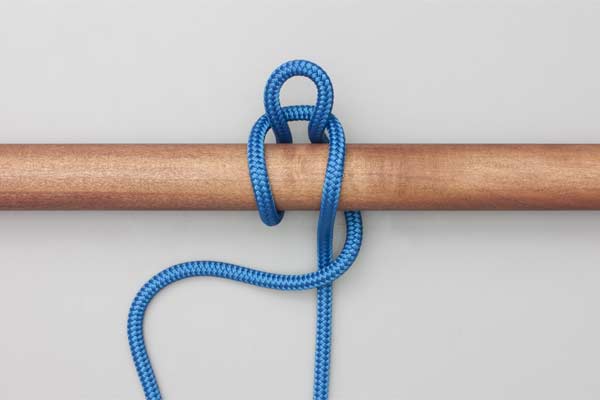
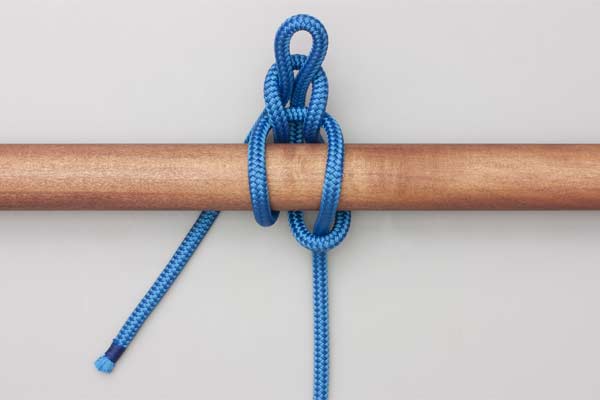
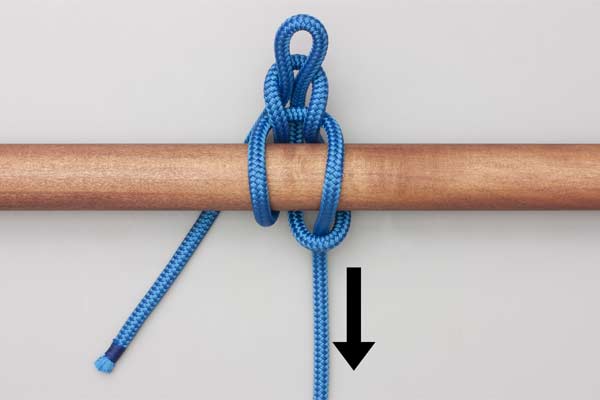
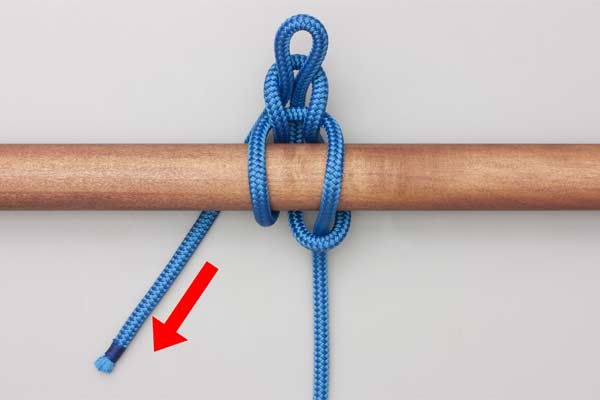
Tumble Hitch Details
Origin: Dan Lehman described a variation on the Highwayman's Hitch at the end of his entry on March 6, 2004 in Google Groups rec.crafts.knots but he gave it no name. Roo replied, created drawings, named it the Tumble Hitch, and now shows it on his website Notable Knots. This is now the accepted name for Lehman's idea. Like a Slipped Buntline, it is an excellent quick-release hitch that holds a load until released by a pull on the free tail.
Tying it: The standing part remains passive while the knot is being tied. The user can hold up the first bight, and then transfer his grip to the second and third bight in succession. When complete, the hitch should be carefully tightened.
Quick Release Hitches: Many quick-release hitches have been described. The Highwayman's the Siberian (Evenk) and the Mooring are also described here. Of the four, the Tumble Hitch may be the most secure.
Real Danger: Quick release hitches share a major fault: entanglement of the free tail with the moving load can trigger abrupt release. A climber, frightened by a sudden slip or jerk, might grab at the adjacent line and trigger a fatal fall. Quick release knots should not be used for retrieving a climbing rope because there are recommended alternatives: 1, 2, 3, 4.
Other Uses: The Tumble Hitch is suitable for temporary, supervised use to hold non-critical loads, e.g., while boarding a kayak. Or, a dinghy may be temporarily secured alongside a high dock. The Tumble Hitch can be used to lower several loads of provisions into the dinghy. Then, when the owner has climbed down the ladder and is safely aboard, the tail of the dinghy painter can be pulled to retrieve it.
Advantages: The Tumble Hitch is stable and jam-proof even with heavy loads. The design of the hitch transfers the load first to an intermediate bight and then to the final locking bight. This limits the load on the locking bight and avoids jamming.
Longer use: To use the Tumble Hitch for longer periods, the final bight can be lengthened and tied off as an overhand knot around the standing end. The jam-proof benefits are retained and the overhand knot can be untied when the quick-release feature is required.


